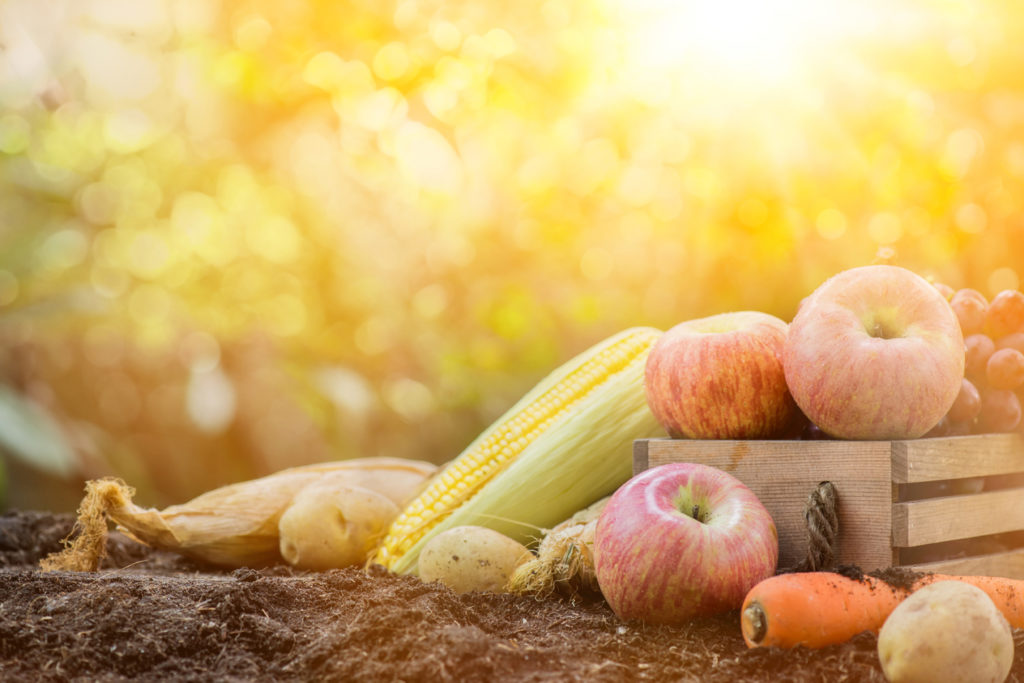
What is the Vata season?
According to Ayurveda, the fall and part of winter are the Vata season in the northern hemisphere. It’s not the calendar year which defines the Vata season, but the qualities of the atmosphere.
Vata season qualities include
- Roughness, harshness
- Lightness and dryness in the air
- Cold and cool temperatures
- Movement and activity
These environmental factors influence the human system by increasing the same qualities in our minds and bodies. The light, rough, cold and dry qualities are depleting to the system, lowering our immunity and resistance to illness. This is why the onset of fall and winter can trigger many seasonal imbalances, such as allergies, colds, fatigue and digestive sensitivities.
How to avoid Vata imbalances
Vata is one of the three Doshas, or energetic humours in Ayurveda, and they constitute everything in the universe. When one Dosha is in excess, there are two ways of restoring balance: the excess Dosha needs to be reduced, and the other two Doshas can be increased to mitigate the imbalance. Ayurveda is known as “the common sense science” because the fundamental logic behind wellness is that simple! During the Vata season, we just need to reduce Vata and counteract its qualities by adding more qualities of Pitta and Kapha into our daily regimen.
Kapha balancing qualities
- Moisture
- Heaviness and unctuousness
- Warmth
- Calm and peace
Inspired by the qualities above, we can bring more moist, nurturing and calming energies into our daily routines, exercise, food, other self-care practices. Here are some simple suggestions:
Maintain consistency
Vata Dosha tends to veer towards extremes or be erratic, and this can manifest in chaotic, changing schedules. Yet the human system depends on a consistent rhythm to stay balanced, as all nature ebbs and flows through its daily and nightly rhythms. Sticking to regular bedtimes, waking times, exercise and meal times does wonders for health on a regular basis, especially during Vata season.
Minimize dry and light foods, opt for moist and heavy
During the late winter, spring and parts of summer we need lighter foods to help us stay clear, mobile and focused. The atmosphere is naturally denser at those times, so our diet counterbalances it with lighter, fresher fare that isn’t too hot. But come fall season, we need to ground and nourish. Traditional seasonal fare is already Ayurvedic in spirit – try more root veggies, warm soups, stews and hearty meals.
Take "you" time, a lot of the time
Every day our lives are highly Vata throughout our activity – thinking, talking, moving are all Vata activities. To avoid depletion, we need rest and relaxation. This is the season to spend more time at home if you need some hibernation, or perhaps schedule in more yoga, meditation or other mindful practices you find soothing.
Perform a fall cleanse rejuvenation
The transition of the season to fall signals “rejuvenation” in Ayurveda. Not only is a rejuvenation beneficial for mitigating current imbalances, it also helps prevent future illness. An Ayurvedic fall cleanse like Kerala Ayurveda’s Personalized Fall Rejuvenation involves gentle cleansing and restorative actions, includes a combination of dietary guidelines, herbal formulations and supplements to enhance digestion and support toxin removal, therapeutic purgation and rejuvenation techniques.
Vata season is a beautiful time for slowing down and going inward. While the world may lean towards Vata imbalance and lure you into overexertion and anxiety, remember the Ayurvedic wisdom of the season: creating space, letting go, and building warmth in your lifestyle and heart.
About the author
-

Jamila is a certified Ayurvedic Wellness Counselor (AWC), Yoga Teacher (CYT) and Level I Reiki Practitioner. She earned her Bachelor of Arts (BA) in Literature & Journalism from New York University and channels her combined marketing skills, artistry and ancient wisdom to spread content seeds that elevate the attention economy, promote healing and radical planetary growth. In her dedication to...

